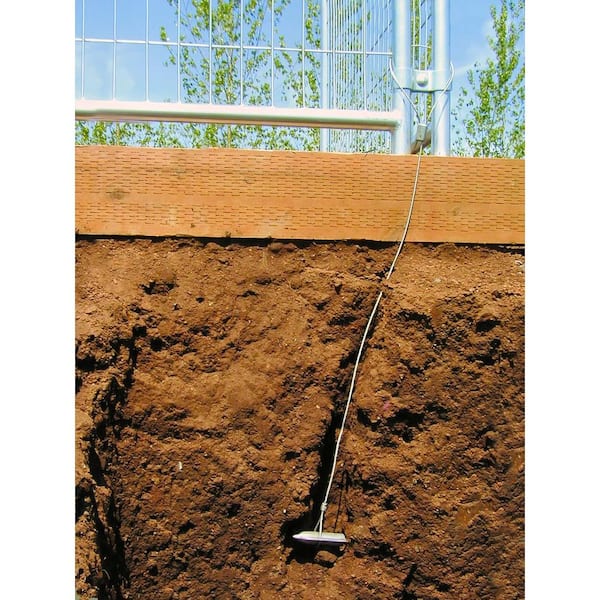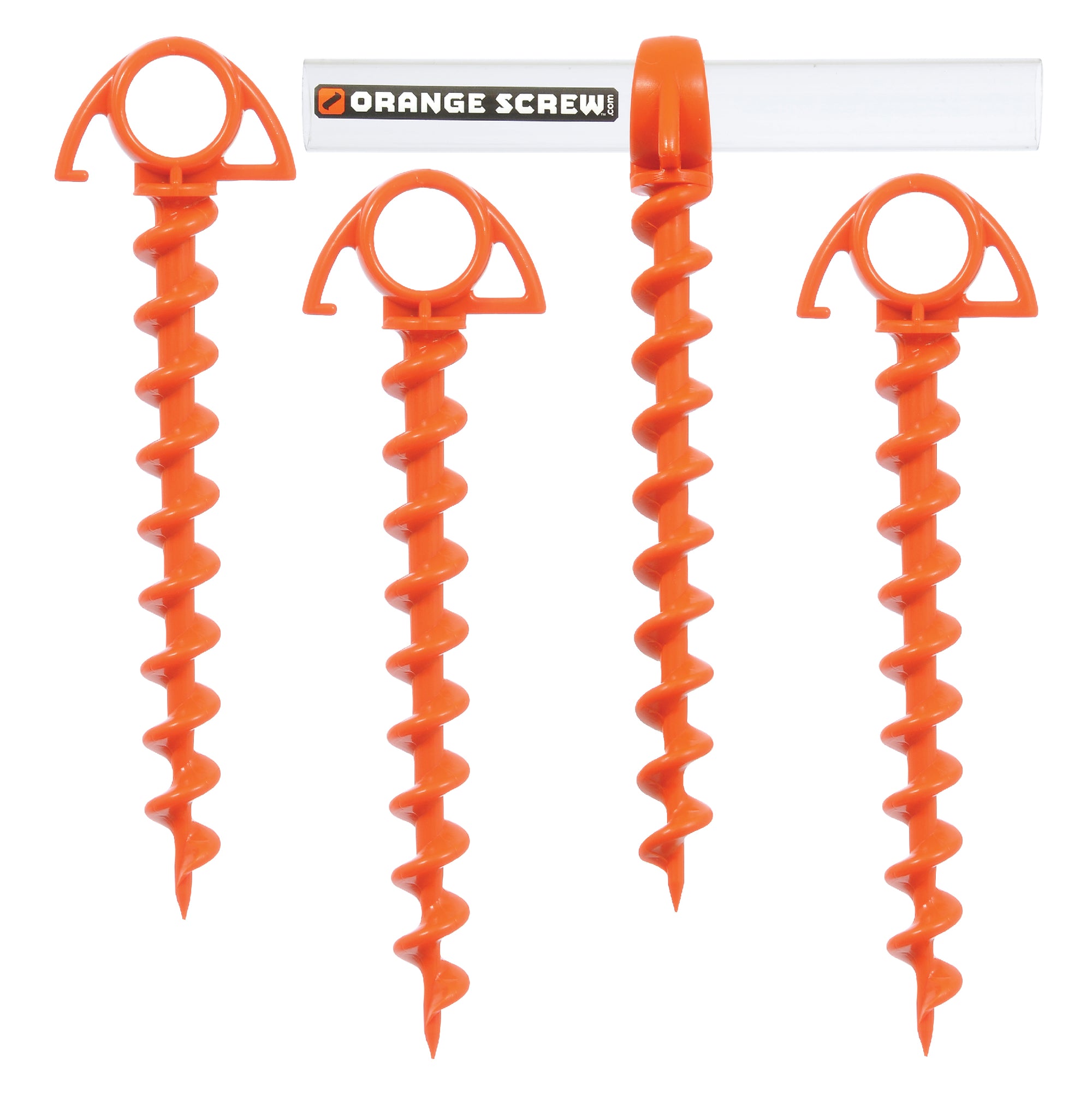Recent Developments in Ground Anchor Design and Their Advantages
Recent Developments in Ground Anchor Design and Their Advantages
Blog Article
Discover the Different Kinds of Ground Support for Your Next Job
From auger supports, which excel in diverse dirt problems, to stake supports created for momentary setups, the alternatives are numerous. Furthermore, concrete and screw supports existing distinct benefits in specific situations, while deadman anchors are tailored for applications needing resistance to lateral forces.

Auger Anchors
Auger anchors are a preferred choice in various building and construction and landscape design jobs due to their special design and efficient securing capabilities. These supports contain a helical screw-like shaft that is driven into the ground, enabling a protected and steady hold. The spiral layout helps with simple setup and maximizes resistance versus lateral forces, making auger anchors particularly efficient in applications such as fence, short-lived frameworks, and erosion control.
The setup process of auger anchors is fairly straightforward. Auger supports can be quickly eliminated and recycled, which adds to their cost-effectiveness and sustainability.
One of the substantial benefits of auger anchors is their capability to distribute tons equally across the surrounding dirt, reducing the threat of soil disruption and minimizing ecological influence. In addition, they are less at risk to heaving or loosening up with time compared to standard securing methods. Consequently, auger anchors are an exceptional option for jobs calling for reliable and resilient anchoring solutions.

Stake Anchors
When it involves securing frameworks in a selection of exterior applications, stake anchors supply a simple and reliable remedy. These anchors are usually constructed from durable materials such as steel or light weight aluminum, made to endure ecological anxieties while supplying ideal security. Their basic style enables for fast setup, making them a suitable option for long-term or short-term anchoring needs.
Risk supports are particularly valuable in protecting outdoors tents, canopies, and other lightweight frameworks against wind and climate. They work by being driven right into the ground at an angle, developing a strong hold that withstands pull-out forces - Ground Anchor. The performance of stake supports depends on several variables, consisting of soil kind, dampness web content, and the angle of installment
For included safety, many stake supports come with add-on points for ropes or straps, enabling stress modifications as required. In applications such as landscape design or building and construction, they can properly maintain tools or frameworks on unequal surface. On the whole, stake anchors offer a versatile and affordable remedy for safeguarding numerous exterior setups, making them a recommended selection for professionals and DIY lovers alike.
Concrete Anchors
Concrete supports offer a robust solution for protecting structures to concrete surfaces, making certain stability and safety and security in different applications. These anchors are vital for tasks ranging from domestic constructions to large industrial setups. They can be found in various kinds, consisting of growth supports, glue anchors, and undercut supports, each created for certain load needs and environmental conditions.
Sticky supports use high-strength epoxy or resin to bond the support to the concrete, using premium load-bearing abilities, especially in split concrete situations. Undercut anchors create a special form within the concrete, offering remarkable holding power, particularly in applications where tensile lots are prevalent.
Picking the appropriate concrete support includes considering aspects such as the weight of the tons, the condition of the concrete, and environmental problems. Appropriate installment methods are essential to make sure ideal performance and dependability. When carried out appropriately, concrete anchors considerably boost the structural stability of different tasks, making them indispensable in modern-day building and construction methods. Understanding the particular needs of your task will certainly help in choosing the ideal type of concrete support for the job.
Screw Anchors

Screw anchors are a flexible securing service that can be effectively used in a selection of applications where typical concrete supports may not be enough. These anchors include a helical design that allows them to be quickly driven into the ground, making them excellent for use in dirt and other substratums. Their distinct framework gives outstanding holding power and resistance to pull-out forces, making them ideal for countless jobs, from landscape design to structural assistance.
One of the main benefits of screw anchors is their ease of installment. They require minimal tools and can typically be set up without the requirement for excavation, which conserves both time and labor costs. In addition, screw anchors can be gotten rid of and reused, supplying a sustainable remedy for short-term applications.
Screw supports are specifically helpful in locations where dirt problems are challenging, such as sandy or loose dirts. Their capability to be mounted at differing depths enables personalization based upon particular job needs. Generally, screw supports give a trustworthy and efficient securing technique, making them a superb choice for engineers and specialists looking for effective remedies for their projects.
Deadman Anchors
Deadman supports act as a robust remedy for supporting frameworks in difficult conditions, specifically where traditional securing methods may fail. These supports consist of large, heavy things buried underground, which develop resistance against side forces. The style generally involves a straight element, such as a block of next concrete or a metal plate, hidden in the dirt, to which straps or wires are connected.
The efficiency of deadman anchors depends on their capability to distribute tons over a larger location, minimizing the risk of failing in unsteady dirt problems. They are particularly advantageous in applications such as preserving walls, short-lived structures, and slope stablizing, where dirt motion can compromise the honesty of the framework.
Installation of deadman supports requires cautious planning to guarantee they are put at the proper deepness and positioning, maximizing their load-bearing capacity. While they might call for even more labor and product than light-weight supports, their integrity in negative conditions makes them vital for lasting projects. Deadman supports are versatile and can be adapted to different applications, making them a best choice for engineers encountering special obstacles in their tasks.
Conclusion
In recap, picking the appropriate sort of ground anchor is important for making certain security and protection in various projects. Auger anchors succeed in varied soil problems, while stake anchors match short-term applications. For concrete surface areas, expansion and glue supports supply reputable choices, and screw anchors supply versatility in challenging terrains. like this Deadman anchors are especially effective in withstanding lateral pressures for preserving wall surfaces. Mindful factor to consider of these options will boost project end results and structural This Site stability.
Additionally, concrete and screw anchors existing one-of-a-kind benefits in details scenarios, while deadman supports are tailored for applications needing resistance to lateral forces - Ground Anchor.Auger supports are a preferred option in different building and landscaping jobs due to their one-of-a-kind design and reliable securing abilities. They come in different kinds, including expansion supports, glue anchors, and undercut anchors, each developed for specific lots demands and environmental problems
Sticky anchors make use of high-strength epoxy or material to bond the anchor to the concrete, supplying premium load-bearing capacities, specifically in fractured concrete circumstances. Generally, screw anchors provide a reliable and reliable anchoring method, making them a superb option for professionals and designers looking for reliable remedies for their jobs.
Report this page